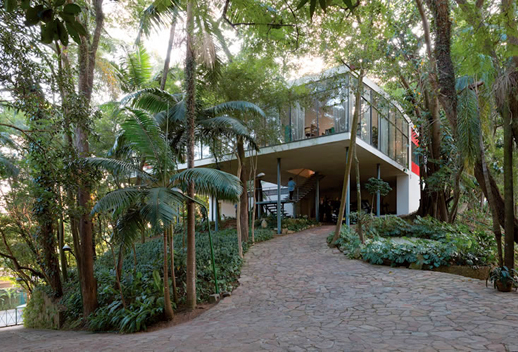10 Things in Tokyo: February–March 2016

Feminist Fan in Japan and Friends
With the position of women in Japanese society coming under the political spotlight in recent times, it is perhaps apt that Australian artist Kate Just should select this moment to bring her own brand of feminist critique to Tokyo. Currently undertaking a residence at Youkobo Art Space, Just has been developing her series of hand-knit portraits of feminist artists and art, and here brings together depictions of Pussy Riot and Yoko Ono with the work of other Japanese and international artists with their own feminist agendas. Participating artists include Rokudenashiko, with new work drawn from her recent legal battle, Yoshiko Shimada, an icon of feminist and anti-war art in Japan, as well as Kotoe Ishii, Tomorrow Girls Troop, and Kasumi Iwama. Through February 26.
The 19th Exhibition of the Taro Okamoto Award for Contemporary Art
With award ceremony season still well under way, one of the highlights of the Kanto art circuit is again a must-see for all of those who wish to keep up with the freshest and most challenging new faces in Japanese art. With top prize going to Kan Miyake for “Look Up at the Blue Sky,” a seven-panel relief of paper, clay, and Styrofoam on themes of ego, dreams, work, life, and death in a style inspired by the famed murals of Mexico, the show at Taro Okamoto Museum of Art, Kawasaki features wildly ambitious work from over 20 rising artists which cannot fail to impress itself upon the viewer. Through April 10.
Kunié Sugiura “Little Families; Fixity of Nature, 1992-2001”
In the world of pixels and digits, is often easy to forget the processes behind the technologies we have come to take for granted in our everyday encounters with the world. The work of Sugiura returns a sense of fragility to contemporary photography, reminding us of its physical and chemical processes which appear to capture a presence. Her experiments in the materiality of photography have encompassed exploration of color, “photo-painting,” and photo college. In this exhibition she presents a collection of photograms from the 1990s, returning us to the roots of photography and questioning the role of its object as she utilizes it in its own representation. Showing at Taka Ishii Gallery through February 27.
Invitation to Archives XIII: Tokyo Biennale ’70, Revisited
We have the Yokohama Triennial, the Aichi Triennale, the Kobe Biennial, etc., but did you know there was in fact a Tokyo Biennale? As early as 1952, this biannual event of international art was established in the Japanese capital under the sponsorship of the Mainichi Newspaper Company and would enjoy a long life up to 1990. Whilst little attention has been paid to many of these events, it was the 10th edition in 1970, with leading young art critic Yusuke Nakahara at its helm which would secure a legendary status. This exhibition proved to be a key platform for many Japanese Mono-ha artists to come into direct dialogue with prominent artists of Arte Povera (Giuseppe Penone), Minimalism (Carl Andre), and site-specific installation (Christo). Furthermore, this ground-breaking show of historical importance has undergone renewed interest in recent years with the popularity of Mono-ha artists. Now, Keio University Art Space recalls the structure of the original at the Tokyo Metropolitan Art Gallery, bringing a slice of avant-garde to greater proximity. Through March 25.
Lina Bo Bardi – Brazil’s Most Beloved Architect
Lina Bo Bardi is an architect known for her human touch, placing people at the heart of her designs which sought to respond to society’s needs rather than realize some abstract ideal. Moving from Italy to Brazil just after WWII, she pursued a highly diverse career spanning furniture design, stage sets, editing, writing, curation, and political activism. She refused to jump on the bandwagon of building as utopian vision, in contrast to architects such as Oscar Niemeyer. For Bo Bardi, the construction of any given space was always centered upon interaction, experimentation, and life. Come re-examine the power of architecture through the work of this wonderfully unique woman full of humanity and strength. Showing at Watari-um through March 27. MuPon
Tokyo Frontline Photo Award New Visions #02
Known as Japan’s most cutting-edge photography prize, the Tokyo Frontline Photo Award at G/P Gallery Shinonome showcases 19 up-and-coming Japanese photographers handpicked by established and celebrated photographers, curators, critics, and contemporary artists. Through February 27.
Sohei Iwata “From an Atelier Called Yabaso”
The Sato Museum of Art presents From an Atelier Called Yabaso by the Nitten-winning Sohei Iwata. This innovative Nihonga painter’s works are marked by a dramatic use of the color red, often seen in lovely and lurid flowers blooming among motifs both traditional and contemporary. Through March 6.
Helene Schjerfbeck “Reflections”
The 19th and 20th century Finnish painter Helene Schjerfbeck’s modernist self-portraits masterfully evocative of mood have only recently begun to be fully appreciated by the international art community. Reflections at the Museum of Modern Art, Hayama guides visitors through Schjerfbeck’s intriguing transformations from realism to abstractionism over the course of her career. Through March 27.
“Kodomo no Tomo” Original Illustrations
The Itabashi Art Museum exhibits works from the magazine Kodomo no Tomo (Children’s Companion), providing a glimpse into the artistic styles and educational philosophies of prewar Japan’s short-lived Taisho era (1912–1926). Illustrations by prominent artists of the day such as Rakuten Kitazawa and Yumeji Takehisa reveal a spirit of childhood freedom, humor, and curiosity promoted in the magazine’s pages. February 20–March 27.
Kazunobu Kano’s Five Hundred Arhats
For the bicentennial of the birth of Kazunobu Kano, creator of the mid-19th century Five Hundred Arhats, Zojo-ji Temple has brought a selection of these panels depicting nirvana-attaining Buddhists back to their sacred and historic home after exhibits at the Edo-Tokyo Museum and the Smithsonian. Documents, diaries, and drawings pertaining to Kano’s life are also on display. Through March 31.
By Emma Ota and Jennifer Pastore
Emma Ota
Emma Ota



